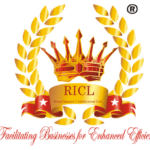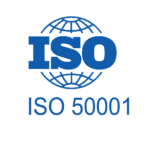Where to begin with ISO 45001 Certification for occupational health and safety?
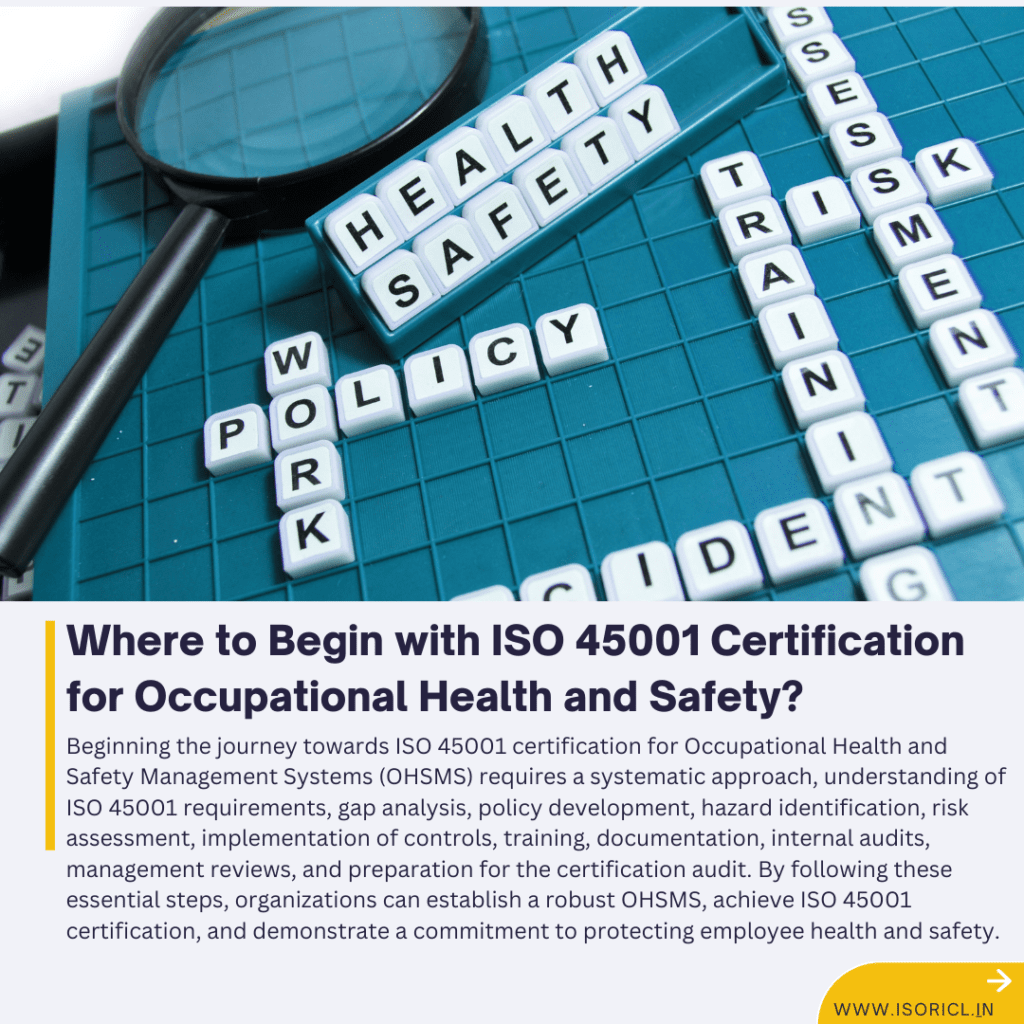
Beginning the journey towards ISO 45001 Certification for occupational health and safety involves several key steps to ensure a systematic and effective implementation of the Occupational Health and Safety Management System (OHSMS). Here’s a structured approach to start with ISO 45001 Certification:
1. Leadership Commitment and Planning
Senior Management Support: Obtain commitment from senior management to prioritize occupational health and safety (OH&S) and support the implementation of ISO 45001 standards.
Establish Objectives: Define clear objectives for implementing ISO 45001, such as reducing workplace injuries, improving employee health, complying with legal requirements, and enhancing organizational reputation.
Allocate Resources: Allocate necessary resources, including finances, personnel, and time, to support the implementation and maintenance of the OHSMS.
2. Gap Analysis and Initial Assessment
Conduct a Gap Analysis: Evaluate current OH&S practices, policies, and procedures against ISO 45001 requirements. Identify gaps and areas where improvements are needed to meet certification standards.
Initial Assessment: Assess organizational readiness for ISO 45001 implementation. Consider factors such as organizational structure, workforce demographics, operational risks, and existing safety management practices.
3. Establish an Occupational Health and Safety Management System (OHSMS)
Policy Development: Develop an OH&S policy aligned with ISO 45001 principles. Ensure the policy reflects the organization’s commitment to protecting employee health, preventing injuries, and promoting a safe work environment.
Risk Assessment and Hazard Identification: Identify workplace hazards and assess associated risks to employee health and safety. Implement controls to mitigate risks and prevent incidents.
Documented Procedures: Establish documented procedures for key OH&S processes, such as incident reporting, emergency preparedness, hazard control, employee training, and consultation.
4. Implementation of ISO 45001 Requirements
Training and Awareness: Provide training to employees on OH&S policies, procedures, and their roles in maintaining a safe workplace. Raise awareness of hazards, safe practices, and the importance of complying with OH&S requirements.
Operational Controls: Implement controls and measures to manage identified hazards and minimize risks to employee health and safety. Ensure compliance with legal and regulatory requirements relevant to occupational health and safety.
Emergency Preparedness and Response: Develop and implement procedures for responding to emergencies, including evacuation plans, first aid protocols, and communication strategies.
5. Internal Audits and Management Review
Internal Audits: Conduct internal audits to assess the effectiveness of the OHSMS and compliance with ISO 45001 requirements. Identify non-conformities, areas for improvement, and corrective actions.
Management Review: Conduct regular management reviews of the OHSMS to evaluate its performance, suitability, adequacy, and effectiveness. Use review findings to make informed decisions and drive continual improvement.
6. Certification Readiness
Preparation for Certification Audit: Prepare documentation, records, and evidence of implementation for review by an accredited certification body. Ensure readiness to demonstrate compliance with ISO 45001 standards.
Engage Certification Body: Select a reputable certification body accredited for ISO 45001 Certification. Initiate contact, discuss audit requirements, and schedule the certification audit.
7. Certification Audit and Beyond
Certification Audit: Undergo a certification audit conducted by the chosen certification body. The audit includes a review of documented procedures, interviews with personnel, and observations of workplace practices.
Address Audit Findings: Address any non-conformities or areas for improvement identified during the certification audit. Implement corrective actions and improvements as necessary to achieve certification.
Maintain and Improve: After achieving ISO 45001 Certification, maintain the OHSMS and continually improve occupational health and safety practices. Monitor performance, conduct periodic reviews, and adapt to changes in organizational context or regulatory requirements.
Conclusion
Beginning with ISO 45001 Certification involves leadership commitment, thorough planning, gap analysis, implementation of an OHSMS aligned with ISO standards, internal audits, preparation for certification audits, and ongoing improvement efforts. By systematically addressing occupational health and safety risks, organizations can create a safer workplace, protect employee well-being, comply with legal requirements, and achieve ISO 45001 Certification as a testament to their commitment to occupational health and safety excellence.
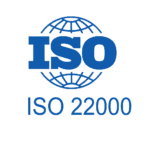
ISO 22000
Food Safety Management System

HACCP
Hazard Analysis and Critical Control Points

FSSC 22000
Food Safety Management Certification Scheme
ISO 22301
Business Continuity Management Systems
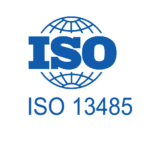
ISO 13485
Quality Management For Medical Device
ISO/IEC 27001
Information Security Management System
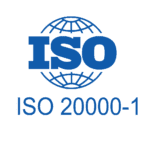
ISO 20000-1
Information Technology Service Management
ISO 42001
Artificial Intelligence Management System
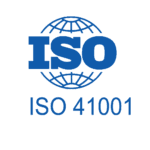
ISO 41001
Facility Management System
ISO 21001
Educational Organizations Management System
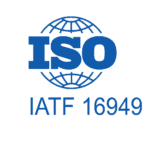
IATF 16949
Quality Management For Automotive

TL 9000
Quality Management System for Telecom
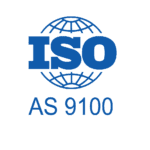
AS 9100
Quality Management for Aerospace Industry

ISO 30000
Ship Recycling Management System
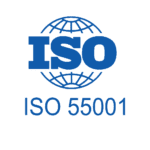
ISO 55001
Asset Management System
